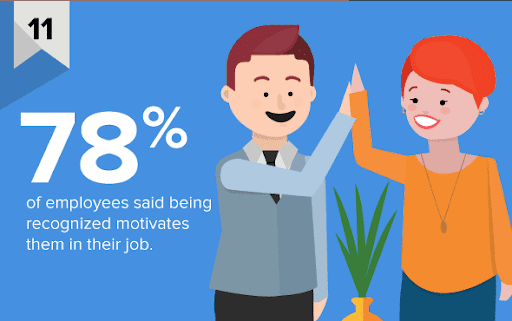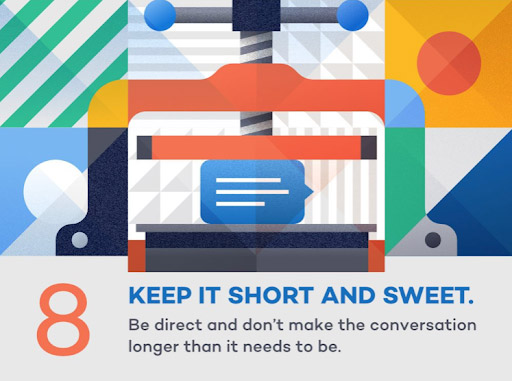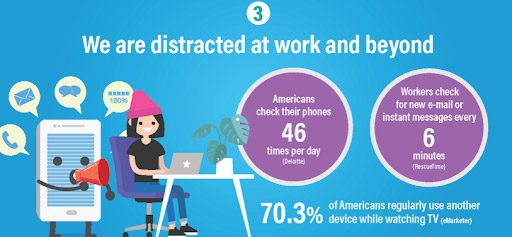Providing feedback to colleagues is one of the most important tasks in any workplace. However, while offering negative feedback can be unpleasant at the time, its broader impact is always positive. 89% of HR leaders say that ongoing peer feedback and check-ins have a positive impact on their organizations.
For remote workers, feedback is just as important, but more difficult to deliver. It’s likely that there will be reduced contact between colleagues, with a risk of misjudged tone and misinterpretation.
Luckily, these aren’t insurmountable obstacles. Use this guide to help you deliver feedback across remote teams more effectively, in an honest and helpful manner, of course.
Table of Contents
Why Is Feedback Essential?
It’s important to establish good practices for providing feedback because all of us will have room for improvement. Feedback from a colleague or manager is one of the essential paths to improving as professionals.
Feedback is also a key ingredient in team cohesion, and this is especially important for people working remotely. Professionals need to feel like they can address concerns they have with the people around them; by doing so, they work better as a broader unit. It also helps draw attention to larger problems within a remote workforce, which might otherwise go overlooked. If people don’t feel they can broach difficult topics, it’s possible for problems to fester.
Feedback isn’t always a negative experience. When employees feel that their achievements are recognized, this can have a positive impact on their job performance. This is another great reason to develop a coherent feedback process; negative or positive, feedback helps us to work better.
Good feedback has the same benefits as tools like no code automation. It allows professionals to work more efficiently, reduce errors and boost their overall productivity.
What Is the Best Way to Deliver Feedback?
Since every workforce looks (and works) a little differently, there’s no off-the-rack approach. Use these tips to create a feedback system that works best for your workforce.
1. Be Honest with Your Colleagues
The key element of feedback is honesty; without this, your projects are never going to be as strong as they could be. It can be tempting to bite your tongue regarding minor flaws or withhold feedback altogether. However, it’s best to push through this initial awkwardness for the sake of the project, and the individual’s performance.
Whatever feedback you offer, make sure it’s valid and constructive. Work like a product recommendations engine; make sure what you have to say is rooted in fact. Strive to be as specific as possible with your comments, too; anything vague will prolong the process and could lead to misinterpretation. This is particularly important in a remote working environment, where you can’t just walk across the office to clarify something.
Another part of honesty is to help your colleague understand why you’re giving feedback in the first place. Project feedback has both short-term and long-term benefits. Just as AI affiliate marketing offers a raft of benefits, feedback improves the specific project you’re working on and helps improve a colleague’s overall performance.
While a colleague may understand this on an intuitive level, it doesn’t hurt to emphasize this if necessary. Don’t be shy about stating your professional concern for them, and encouraging them to maintain healthy professional connections with their fellow remote workers. Make sure they understand your feedback isn’t mean-spirited. It is—or should be—given with their best interests in mind.
Since this kind of communication can often work better face to face, a VoIP service is worth considering. If you’ve ever asked, “what is a VoIP service?” a remote workforce is an ideal place to use one.
2. Give Feedback in the Appropriate Format
Today, professionals can communicate in many different ways—email, instant messaging, and video conferencing. However, different formats work best for different tasks. You might want to email a brief rather than have a video meeting about it, for instance.
Feedback is no different, but it’s best to ask colleagues how they want to receive it. For some people, having feedback written down is best as it gives them something they can easily refer back to. Other people might prefer to speak in person, particularly if there’s something they’re not clear about.
Work to provide feedback in each person’s desired format, while allowing some flexibility. Someone might desire written feedback, for example, but reach out to you for clarification on a certain point.
It’s also helpful to establish a clear timeframe of delivery. Taking too long isn’t just stressful for the people receiving the feedback. It slows down your overall workflow and ensures you aren’t working efficiently. All this helps you to communicate like a great leader and contributes toward a happier workplace.
3. Set Limits on the Feedback
Another part of effective feedback is considering how many rounds of feedback are necessary, and who is involved in delivering it.
Sometimes a project will require feedback from a few different people to ensure it’s as strong as possible. If this is the case, make sure that there’s as little overlap between each person. Where possible, have different people focus on different sections of a project.
You could try taking a leaf from an automatic call distributor system, which helps direct customers to the right professional. Work to direct your colleagues to a project that needs their attention.
If too many people are involved in feedback, it can lead to a mess of contradictory opinions and numerous edits on a single project or section. This can be intensely frustrating for the original creator and doesn’t necessarily result in better work.
It’s also a good idea to put a strict limit on how many amendments each person can suggest. While this can seem restrictive, it’s not practical for feedback to run on endlessly.
With each project, there comes a point where you have to sign off on it and move on. This strategy can help clarify each reviewers’ thinking, and help their feedback to be more useful.
4. Work Together to Find Solutions
It can be easy for remote workers to lose sight of their place in a larger organization. Fortunately, there are ways to rectify this—and improve colleague communication in the process.
One way to maintain healthy connections is via a video conference with multiple colleagues. These don’t have to take place every day, but a regular schedule can help. Try aiming for one a week, or once a fortnight at the very least.
While we’ve established that too many voices can sabotage feedback, this format can help people clarify minor points or ambiguous communications. It can also help you find a solution when one isn’t forthcoming. By bringing together colleagues in one place—and focusing their attention on a problem—an elusive solution might finally present itself.
This concept of collaboration works on a smaller scale, too. When you’re delivering feedback to a colleague, a good strategy is involving them in future actions. Ask them how they would do things differently going forward, and offer to brainstorm solutions together if they aren’t obvious.
If you think it might be useful, ask for their opinions on a possible solution. This helps them feel involved and respected during the project’s development. Crucially, it could also offer a fresh perspective on the problem at hand. If practical, (and necessary) encourage colleagues to upskill towards professional advancement.
5. Check That Feedback Is Acted Upon
In call center WFM, performance is tracked and managers get notified if there’s cause for concern. We can take a similar approach with our feedback approach.
Once you’ve critiqued a piece of work, it’s important you make sure that your feedback was incorporated into the work. A good way to ensure this is to write down feedback, even if it was first delivered verbally. Even a couple of paragraphs can help to serve as a record of the discussion.
Unless it becomes a recurring problem, try not to take it personally if feedback is overlooked. Many professionals—regardless of their industry—have to deal with a high volume of communications. For remote workers, this can be particularly true, and a feedback document can be easily misplaced.
A good way to ensure feedback gets acted upon is by scheduling this activity into the broader workflow. There are a few ways to do this. You might want to create a weekly email that highlights feedback tasks for each colleague. Alternatively, you might want to create a reminder for yourself to check feedback is acted upon.
This can be a better option if some colleagues frequently have more amends than others. Collating all amends into a single document can lead to colleagues feeling self-conscious and undermines the feedback’s ultimate purpose—to improve project quality and broader performance.
Taking the Right Path Forward
Feedback is often a touchy subject in a professional environment, regardless of how mature or experienced your colleagues are. While there may be teething troubles with a remote or inexperienced workforce, it’s important to focus on the end goal. That said, a sensitive and thoughtful approach to the task is always worth pursuing.
Always prioritize honesty in your communications, and establish clear, consistent mechanisms for delivering feedback to the people who need it. Don’t be afraid to be a little flexible as the feedback demands, and consider fostering a culture of learning in your workplace. By having these systems in place, your feedback—and projects—will be all the stronger, no matter what your workplace looks like.
See also:








